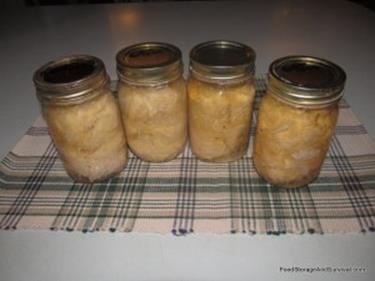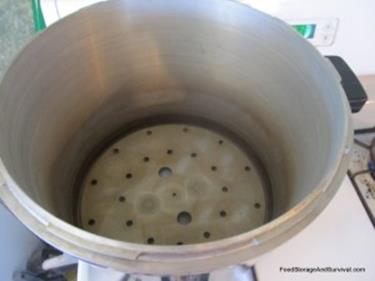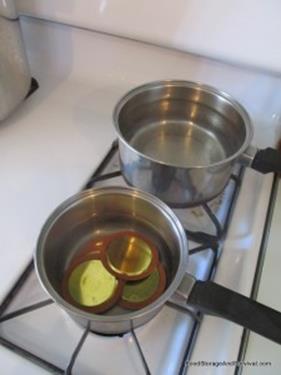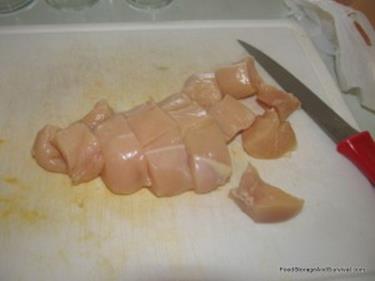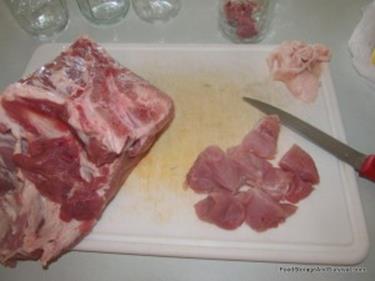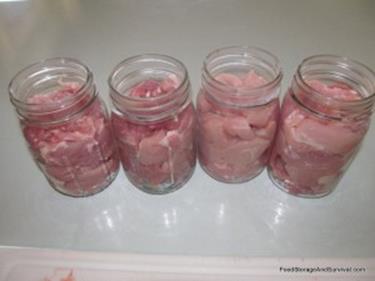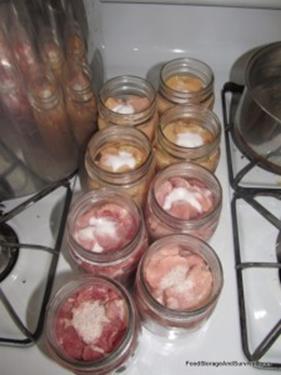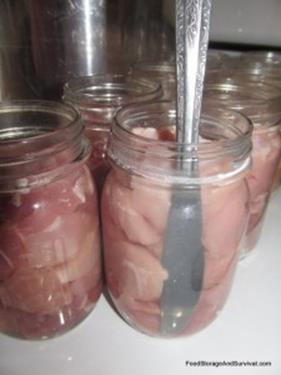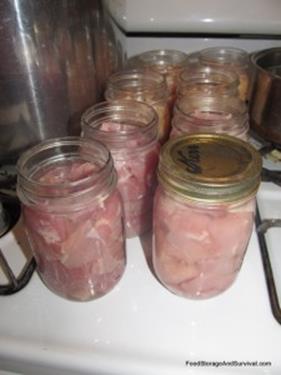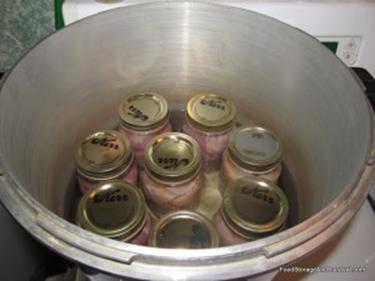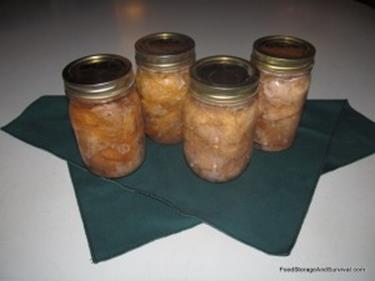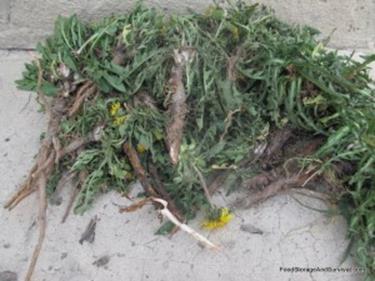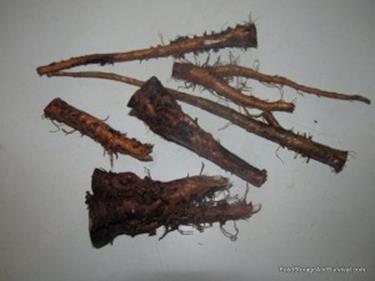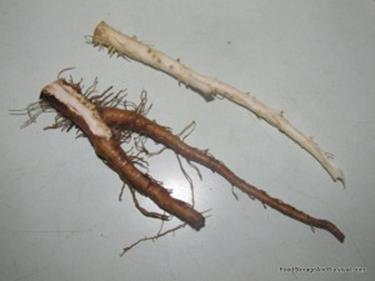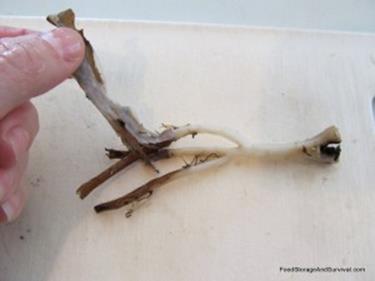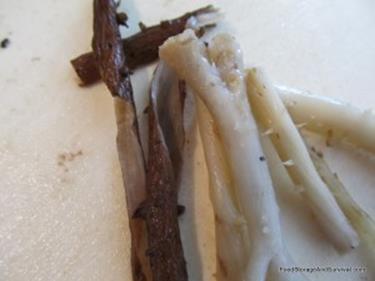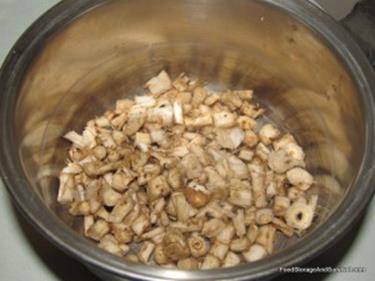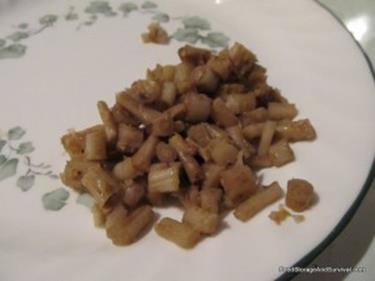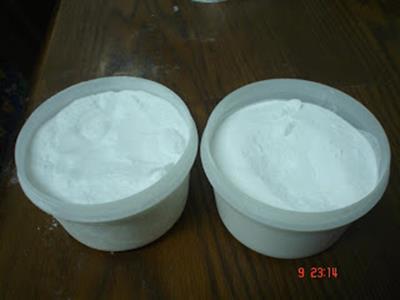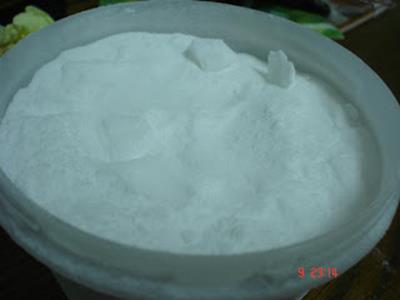Here is a great article by Vicki W.
In 2010, our family became aware of the need to become more prepared in the event of disaster or financial collapse. Having not lived this lifestyle, learning about what it takes to do this was quite overwhelming. I began to scour the internet for food storage ideas. I even took a small food storage introductory class held by a local Mormon woman who has a passion to teach on this subject. I started learning skills like bread baking, dehydrating, Dutch oven cooking, etc.
I learned that a Foodsaver machine could vacuum mason jar lids and effectively preserve foods. Although pricey, I bought the Foodsaver and the special lid adapters. I frequently pick up used canning jars at garage sales and thrift stores and I have also found that many stores mark down their canning supplies after canning season is over. However, two thoughts about vacuum sealing jars bothered me. Some people thought the Foodsaver was too expensive. They would rather spend their prepping dollars on actual food. The second thought was what if we didn’t have power to operate it? I was hoping for other solutions.
On You Tube, there is a video that describes using the Pump-N-Seal. I had not previously heard of this device. The same day that I found out about it, I walked into a thrift store and found one for $2. One benefit that it offers is that you can also use glass jars such as jelly, spaghetti, pickle, etc. I discovered you could just punch a small hole with a push pin in a mason jar lid or used jar lid, cover with electrical tape, pump, and it would seal. It would also work with the Foodsaver jar adapters to seal mason jars. It works either way and it doesn’t require electricity. However, it’s $40. Could it be done less expensively?
There is a blog called Salad in a Jar. She has a video that describes using the $20 pump that is electric/rechargeable that I recommend watching to see how you use the jar adapters. The price was getting better. I’ve also seen the brake bleeder pump, but you really have a hand workout for it to seal. But after experimentation, I found a $4.25 solution that I am very excited about.
Ziploc has a manual pump that is supposed to seal freezer bags. For $4.25 the kit comes with a pump and three bags. I found the bags to leak and were not effective like the Foodsaver machine and bags are. However, the manual pump works great to seal both mason jars (with either the small or wide mouth adapters) or the pin prick/electrical tape method. Either method will vacuum seal jars. You can reuse pickle, olive, spaghetti jars, etc. or canning jars with the pin hole/electrical tape – and Ziploc pump. Or with the jar adapter, you can seal regular or wide mouth canning jars with Ball or Kerr jar lids without punching a hole.
I have been vacuum sealing and demonstrating and have really given this little pump a real workout, and it keeps on going. I have shown family and friends, Mennonite ladies, and even demonstrated it for the Amish women who worked at an Amish bulk store. Everyone is impressed that has seen and tried it.
What benefit would there be for us preppers? You can start saving your grocery dollars by not throwing stale, expired food away and you would have a convenient way to re-pack food after you open those #10 cans. You can use this the day you bring it home (not wait for some “disaster” to put it to use). If you get a great deal on cake mixes like 10 for $10, you can pack them in mason jars and they will last for several years – well past the “expiration” date.
What about nuts? You get a killer deal on a bulk buy – but they go rancid fairly quickly. Not if they’re vacuumed sealed. What about brown sugar? It will stay moist and flowing if vacuumed sealed in a jar. How about chocolate chips, dried fruit, dehydrated vegetables, tea, coffee, herbs, and spices? Yes, yes, yes! This is not a substitution for heat canning. It is for keeping things fresh such as wheat berries, beans, flour, chocolate chips, etc. in longer term storage, which is several years.
A sample of dry storage goods is: Wheat berries, oatmeal, rice, beans, flour, sugar, salt, coffee, pasta, tea, dried herbs, spices, dehydrated foods, jerky, potato flakes, chocolate chips, candy, etc. You can even leave things in their original package such as granola bars or chocolate chips, put a pin prick in the package, put the desired item in the jar, and vacuum away.
Ace Hardware sells half gallon mason jars. They are very handy to store bulk items such as beans, oatmeal, rice, etc. in.
My next experiment will be with olive oil. I buy it in small containers because I hear it goes bad quickly. I will vacuum seal some oil in a mason jar and check it every six months to see how long it stores. I am thinking that this will increase the shelf life significantly.
Will this work in the fridge and freezer? Absolutely! Let me give an example: strawberries go bad quickly. I’ve had them keep for over a week in a mason jar in the fridge quite nicely. I first wash them in 1 part vinegar to 10 parts water, rinse, drain, dry, and then seal them in a jar. This would work for other berries, too.
I used half an avocado and put the other half sealed in a jar in the fridge and it didn’t turn brown. It kept for several days. (I then ate it, but it could have gone longer). It would keep months in the freezer. It would be great to buy avocados for a dollar or less and freeze them to have on hand for guacamole. Lettuce keeps for several weeks in the refrigerator when sealed in a jar. In other words, it prolongs the quality of food. Some items liked cooked food can be preserved only a few days longer than you normally would. Fruits and veggies keep even longer. Frozen items may keep for several years.
Here is a sample of items to refrigerate in sealed jars: Lettuce, cut onions, green onions, berries, green pepper, celery, avocado, yeast, etc. You can also extend the life of cooked food and deli meat by a few days longer than normal. (Not longer because it does allow dangerous bacteria to grow if kept longer). However, you may freeze these items if you desire extended life for your food storage. This alone will save the average family money because you’ll have more time to eat the items before they go bad.
Here are a few tips and tricks I’ve learned along the way to keep in mind:
Common sense needs to be used when applying this method. For instance, if you’re not willing to check your jars after sealing and then monthly thereafter for any loss of vacuum, I wouldn’t use this for long term storage. Although I have been doing this for over a year, occasionally a lid does come loose.
If you let refrigerated cooked foods go too long before consuming them, you would be setting yourself up for a dangerous situation. I would suggest looking around the internet for other tips and ideas associated with vacuum sealing.
Use only quality (Ball or Kerr brand) canning jar lids – not the cheap ones. It may be necessary to soak them in very hot water for a few minutes to condition them. You can also recondition the lids of used pickle, olive, or spaghetti jars the same way.
If using the pin prick/electrical tape method to store leftovers, make sure that the lid is clean. For instance, if you use half a jar of spaghetti sauce and want to put the rest sealed in the fridge, make sure the underside of the lid is clean and free of sauce. Poke a hole in the lid and cover with a piece of electrical tape. Use the Ziploc pump to seal. To release the seal, simply pull up the electrical tape and the seal will be broken. Press the tape back down firmly and reseal if desired. (Watch the You Tube demo on the Pump-N-Seal unit for this to make sense).
To release the seal on the canning lids, the dull end of a church key opener can be used to gently pry up the lid or simply use your fingers if they are strong enough.. (Do not bend the lid or it can’t be reused). You can use one canning lid over and over again.
If desired, sterilize the glass jars (like you would for canning) or rinse in vinegar or hydrogen peroxide. Otherwise, soak them in hot soapy water and then dry thoroughly. When filling the jar you have chosen to seal, a wider funnel (used in canning) helps to get the food in the jar and also keep the rim of the jar clean. If you don’t have a funnel, (and I recommend one for the regular and wide mouth size), just wipe off the rim of the jar really well after filling the jar up to one inch below the rim.
To re-use pickle or spaghetti jars, vegetable oil comes in very handy to remove the adhesive bits of those pesky labels.
If vacuuming foods that are more powdery such as spices or coffee, simply place a small piece of paper towel, coffee filter, or muffin liner on top of the food you are sealing and leave about an inch between the food and the top of the jar. The powder will not get sucked up and prevent a good seal. You can also keep food like cake mixes in their original bags. Just put a pin prick through the bag, put in jar and then seal.
If storing jars in the freezer, use the freezer safe mason jars which have completely straight sides.
Don’t forget to label and date your jars. You may think that you will remember what and when you stored things, but the reality is that you won’t. I don’t write on the lids directly because I re-use them. I buy white labels that I write on and then adhere to each jar.
Check the seal on the jars for slow leaks after a day or so. If there is a crack, scratch, or nick on rim of jar (or tiny piece of foreign matter), it can prevent the jar from sealing or cause a slow leak. Discard the jars with imperfections or reuse them for something else if they won’t hold a seal. When using your mason jars to vacuum seal, it is a good idea to put canning rings loosely tightened on the jars so that if someone knocks the jar, the lid will not be knocked off. If using this method for long term storage, it would be wise to check your jars on a monthly basis to make sure that the seal is still good. I have had good success with even the electrical tape method holding a seal, but it’s a good idea to do a monthly inspection in case of any seal failure. If you find a jar that isn’t sealed, simply reseal and check it again later.
I have found with the regular size adapter it is helpful to add an extra lid upside down inside the adapter during the process to aid in sealing. For some reason, I have had no trouble with the wide mouth size, just the regular size adapter. But it is no big deal to put an extra lid upside down in the jar adapter to make the lid seal.
This works for me and my family. I hope it can be of help to you as well. Both the Foodsaver machine and the Pump-N-Seal are good ways to go. I have and use both. But I just had to share this non-electric and inexpensive option for those who would benefit from knowing about this handy device.
To recap, your expenses would be $4.25 for the Ziploc vacuum device and about $10 for each Foodsaver jar adapter purchased. Ideally, you would buy both sizes of the adapters, which brings your total to $25. But you could just buy the pump and do the pin hole/electrical tape method. The Ziploc pump is sold at Wal-Mart and many grocery stores. The jar adapters can be purchased in the camping section at Bass Pro, the Foodsaver web site, or Amazon.com. Instead of buying pricey bags over and over, you would have used spaghetti and pickle jars and mason jars which you can use over and over again.
Many “prepping” ideas would come in use only in the event of disaster or the electricity failing. But this little pump can be used the day you bring it home whether there is a disaster or not. This in turn can save you money on your weekly food bill, thus allowing you to stretch your prepping dollars even more. That, in my book, is priceless.
“When I walk into my kitchen today, I am not alone. Whether we know it or not, none of us is. We bring fathers and mothers and kitchen tables, and every meal we have ever eaten. Food is never just food. It’s also a way of getting at something else: who we are, who we have been, and who we want to be.” Molly Wizenberg, from A Home Made Life
Via: survivalblog
 Follow
Follow